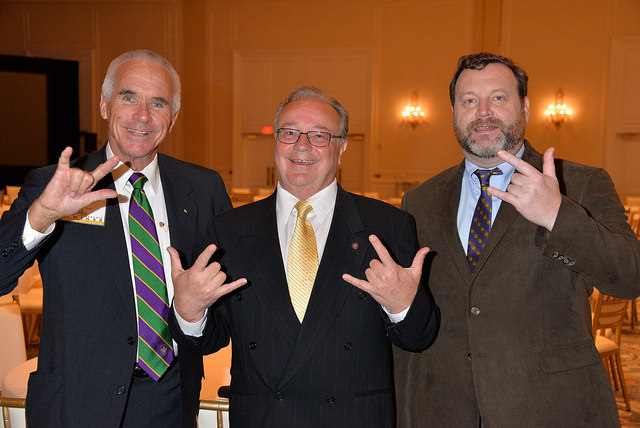Professor Researches What Motivates The Behaviors of Lambda Chi Members
It’s an age-old question: what factors motivate us to behave as we do? While the answer can elude researchers and become more complicated than at the start, bright men and women across the country have dedicated themselves to the science of behavior.
One such researcher is Dr. Rodney Roosevelt of Indiana University-Southeast. Roosevelt, a brother of the Eastern Illinois chapter, has dedicated himself to understanding how cognitive and emotional responses play off each other to produce a social behavior. Lately, that focus has been aimed at Lambda Chi Alpha members.
During his presentation at the Neville Advisor’s College (Feb. 9-12), Roosevelt explained his approach towards understanding what motivates the average fraternity man’s behaviors.

“What we are doing, as it relates to fraternity, is kind of multi-layered,” said Roosevelt. “Layer one is the LAMP Survey; its intention is to monitor behaviors from year to year: did the level of drinking stay the same or differ, what are the trends, and what are our attitudes on drinking.”
Along with the results from the LAMP Survey, which goes out to chapters each year, Roosevelt looked at the outcome of a survey that was given to chapters two years prior.
In this survey, incoming members were asked a series of questions that focused on one behavioral measure: aspirations. Simply put, aspirations are why an individual wants something; is it good and wholesome for them or do they want something for the fame and bling of it.
After two years, Roosevelt revisited this survey this past semester to see how the members who had participated were faring in their new fraternity life. Surprisingly, Roosevelt found that 30% of members who took the survey were not affiliated with Lambda Chi anymore, which suggested they wanted a fraternity experience for the wrong reasons.
From this survey and the results of the annual LAMP Survey, Roosevelt and his team could then pinpoint what made a member successful, or who would become a risk to the fraternity, combining aspirations with the level of drinking. These findings could then be used to build better recruitment approaches.
Roosevelt also looks at the social structure of chapters to figure out how to recruit and maintain the best men possible.
“Chapters change in terms of their behaviors in a heartbeat,” said Roosevelt. “We need to understand why that happens because we might be able to prevent that from happening. So, what I think is going on is there is a critical balance among the key players.”
One such way that Roosevelt is trying to figure out the dynamics of a chapter is studying exclusion versus inclusion. It is Roosevelt’s theory that the behavior of a chapter can change, and even introduce hazing, when members feel excluded. A recent experiment, which was featured at the 2017 Neville Advisor’s College, takes a simple ball toss game to illustrate a chapter’s dynamic.

In the experiment, the participant’s heart rate and facial expressions are monitored as they throw a ball on the computer screen to three other cartoon characters. The participant quickly catches onto the fact that he is not being thrown the ball, which affects his heart rate and stress response.
With fraternity members playing the game, an aggression task follows, which determines how that man deals with exclusion.
“People who are high in cortisol response, stress hormone, respond by being really nice in an aggression task that follows,” said Roosevelt. “They don’t know that they are in an aggression test, but people who are high in cortisol response feel really low in aggression. What we think is they are trying to do mending behaviors.”
Some members can interpret the exclusion as a social status threat. This then plays into why hazing becomes prevalent in some chapters: if certain members who might be power players in the chapter feel socially threatened, they will take it out on someone else, namely other members of the chapter.
So, what is the importance of all this scientific data? According to Roosevelt, a lot.
“The reason this is important is it’s foolhardy and the mistake that fraternities have made for a hundred years now, to try and solve problems without understanding what’s actually going on,” says Roosevelt. “It’s great to say this is social exclusion that we are dealing with, but until we can prove any of these changes throughout the brain, we can’t say for sure. If this is true, we at least know what we have to work on; so if fear of social exclusion is really the problem, we need to be very mindfully educating and training guys to get wingmen.”
The concept of a “wingman” might sound somewhat silly, but it might just be the key to end the fear of social exclusion, therefore putting an end to hazing and unlocking the door to understanding behavior patterns of a chapter.
Roosevelt and his team will continue their research, and hopefully one day, the dynamic of a fraternity will become crystal clear.
For more information on Roosevelt’s work, click here.


